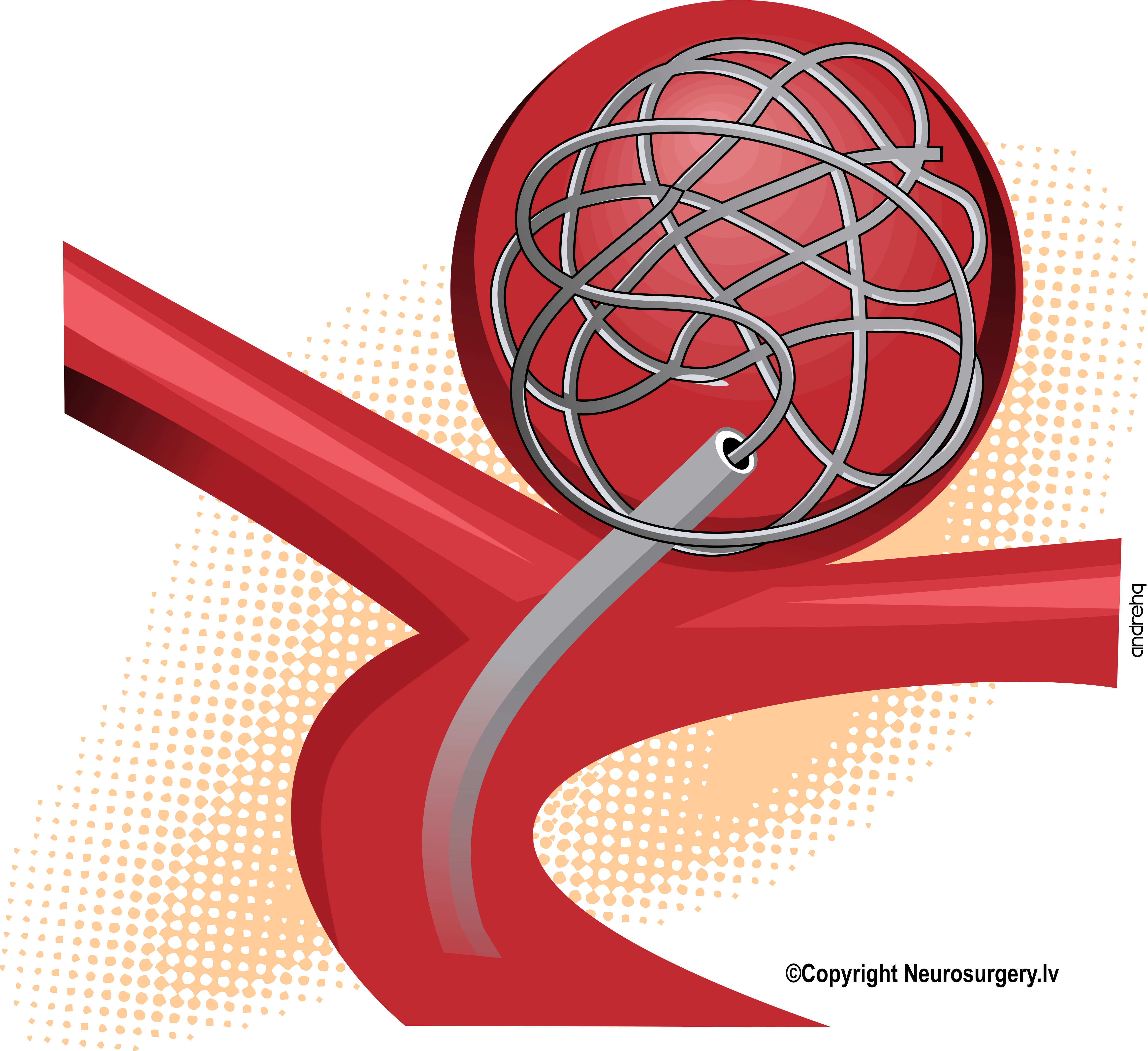Conditions
Aneurysms
Brain aneurysms
A brain aneurysm, also known as a cerebral aneurysm, is a weak or thin spot on a blood vessel in the brain that bulges or balloons out and fills with blood. While most aneurysms are small and may not cause symptoms, they can be extremely dangerous if they rupture, leading to bleeding in the brain (hemorrhagic stroke), which is a life-threatening emergency.

Picture: Coiled aneurysm
Causes and Risk Factors
Aneurysms can develop due to a combination of genetic and environmental factors. Common causes and risk factors include:
- High blood pressure (hypertension)
- Smoking
- Family history of aneurysms
- Trauma or head injury
- Connective tissue disorders (e.g., Ehlers-Danlos syndrome)
- Infections
- Drug use (especially stimulants like cocaine)
Some individuals are born with aneurysms or develop them over time due to vessel wall abnormalities.
Symptoms
Unruptured aneurysms often have no symptoms and are discovered incidentally. However, large or leaking aneurysms may cause:
- Headaches
- Blurred or double vision
- Pain above or behind the eye
- Numbness or weakness on one side of the face
- Difficulty with speech or concentration
A ruptured aneurysm causes a sudden, severe headache—often described as "the worst headache of my life"—and may also lead to:
- Nausea and vomiting
- Stiff neck
- Seizures
- Loss of consciousness
- Sensitivity to light (photophobia)
If you or someone around you experiences these symptoms, call emergency services immediately.
Diagnosis
Aneurysms are diagnosed using imaging tests such as:
- CT scan or CT angiography (CTA)
- MRI or MR angiography (MRA)
- Cerebral angiogram – the gold standard for detailed imaging of brain blood vessels
Treatment Options
Treatment depends on the size, location, and condition of the aneurysm, as well as the patient's overall health. The two primary treatment options are:
1. Surgical Clipping
A procedure where a neurosurgeon places a tiny metal clip at the base of the aneurysm to stop blood flow into it. This prevents rupture or re-bleeding.
2. Endovascular Coiling
A minimally invasive technique where a catheter is inserted through the groin or wrist and guided into the brain's blood vessels. Coils or stents are placed inside the aneurysm to block blood flow and promote clotting.
Some small, unruptured aneurysms may be monitored with regular imaging and medical management instead of immediate surgery.
Why Choose Us?
Our neurosurgery team specializes in the diagnosis and treatment of brain aneurysms using the most advanced surgical and endovascular techniques. We offer:
- Comprehensive, individualized care
- Minimally invasive options
- 24/7 emergency response for ruptured aneurysms
- Collaborative care with neurologists and critical care specialists